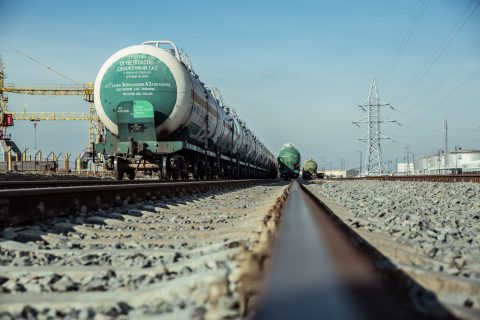Can the port of Koper create new potential for the Middle Corridor?

Though well-known in the sea world, Slovenia isn’t a big name in the China-Europe Express market. Not yet, because the first ships loaded with Chinese cargo have sailed to the Slovenian port of Koper from Turkey, connecting it to the Middle Corridor. But Chinese rail forwarders have their doubts: why does the port of Koper matter, and what is its potential?
It all starts with the current geopolitical situation. The Ukraine war pushed the development of the Middle Corridor for cargo transfer between Europe and China. The Middle Corridor seems to be the most straightforward shortcut between China and Europe so far, and the route options are many. With the port of Koper included, there is yet another point of entry to the European market.
Koper and the Middle Corridor
The Middle Corridor crossing Turkey is one of the much favoured routes since it avoids the crossing of the Black Sea and stretches the use of rail. From the Turkish shores, vessels connect the country to the port of Koper, where cargo can be loaded on another train for further distributing to the Central and Eastern European markets.
Actions have already been taken by KTZ. In March 2023, KTZ announced that it had sent the first trans-Caspian China-Europe train from Jiaozhou, in eastern China, to the port of Koper. Instead of crossing the Black Sea, this time the cargo was directed to Turkey by rail and then headed to Slovenia via sea.
Central East Europe Market
Once cargo reaches the port, it can easily access the European rail network. Edvard Martini, the Managing Director Slovenia at Rohlig SUUS Logistics, explained: “the Port of Koper is strategically located in the northern part of the Adriatic Sea and serves as the main gateway for sea-rail intermodal transportation in Central and Eastern Europe.”
Furthermore, the port of Koper has a comprehensive rail network with major European cities such as Vienna, Munich, Budapest, Bratislava, Prague, Warsaw, and Belgrade, making it relatively easy to connect with customers and shippers in the Central East Europe market, which the Chinese forwarders could take advantage of.
Which type of cargo?
To picture the outlook of such a market, we need to have a glance at the cargo types handled in the port. Currently, solar panels, batteries for electricity storage, and equipment for new factories are the major shipments that arrived at the port of Koper from China, which Hungary, Serbia, and Slovakia have shown high interest in, Martini explained.
Martini isn’t the only one who sees the Central East Europe Market potential, and so does Shanghai Cooperation Organisation. In December 2022, the first Shandong-Slovenia China Europe Express was dispatched and headed to the port of Koper. When asked why Slovenia was chosen as the destination, the organisation replied: “The port of Koper is an important gateway to open up the markets of Central and Southern Europe and Central and Eastern Europe.” But if the China-Europe trade volume rises in the future, will the port still be able to handle the volume? That will be another question we leave for the future.
Also read:
- China: transporting via Kazakhstan is much faster than via the Black Sea
- Koper-Divaca rail line financing takes final and cheaper than expected form
- PSA and Kazakhstan Railways come together to boost Middle Corridor
You just read one of our premium articles free of charge
Want full access? Take advantage of our exclusive offer





Definitely Koper port is alternative to Constanta port which started to be also the main port for cargo from Ukraina last year.
However Koper has been already overcrowded, so adding new volume will lead to the next congestions.
I think that companies which notices the potencial of such ports like Rijeka and Triest, will win.